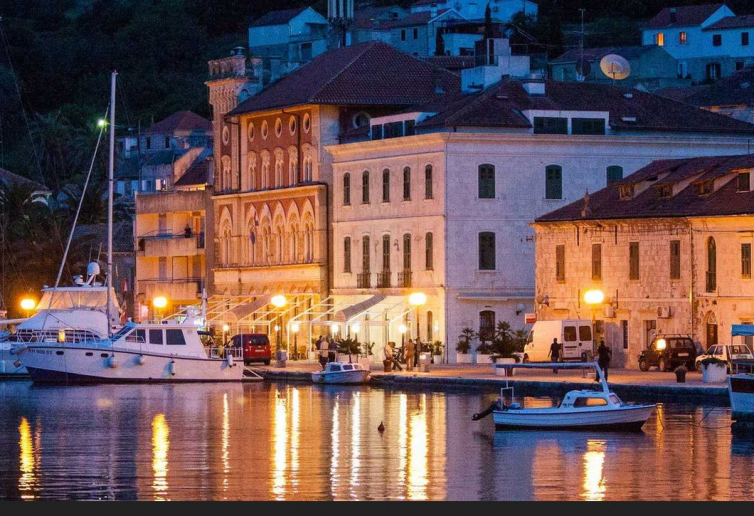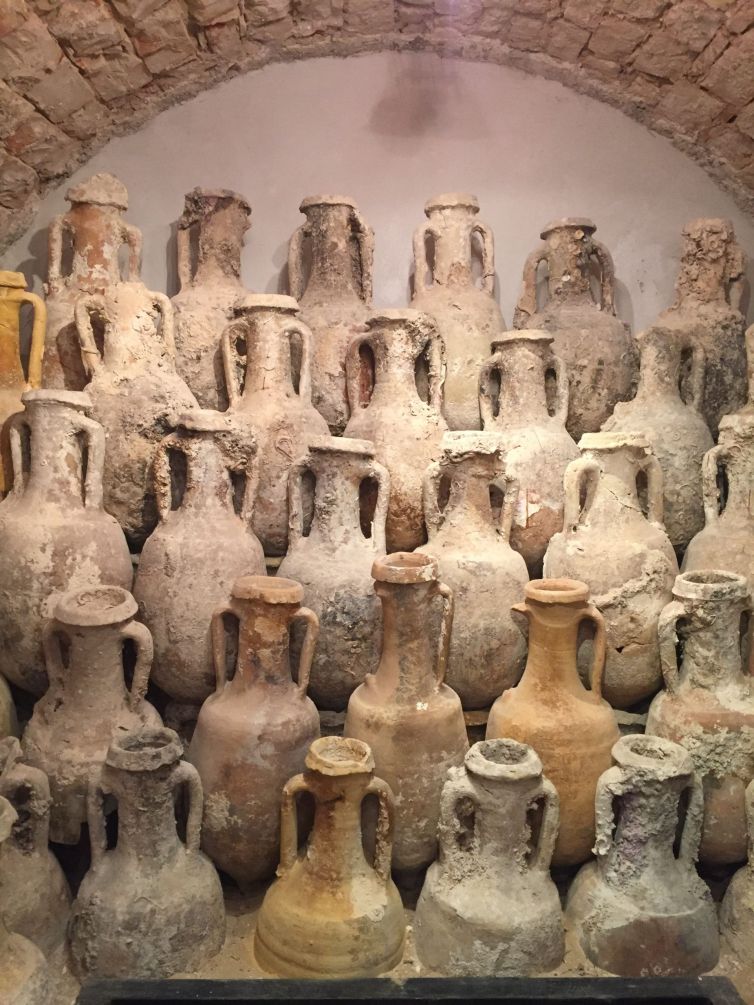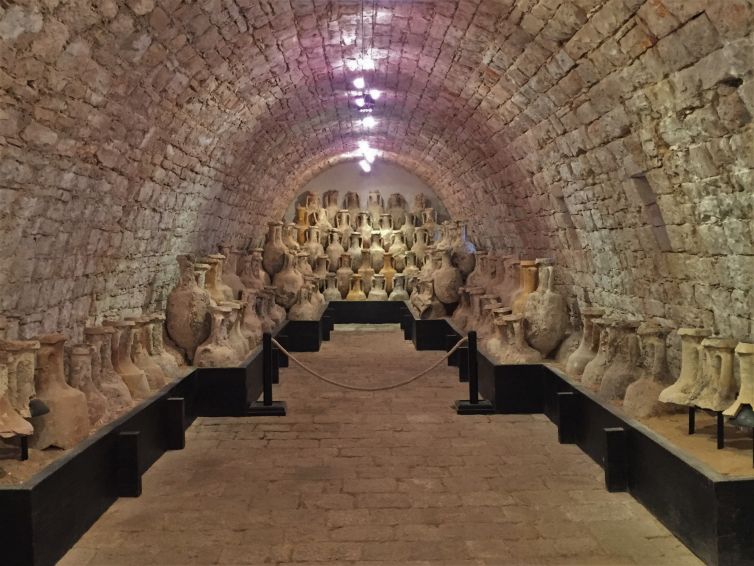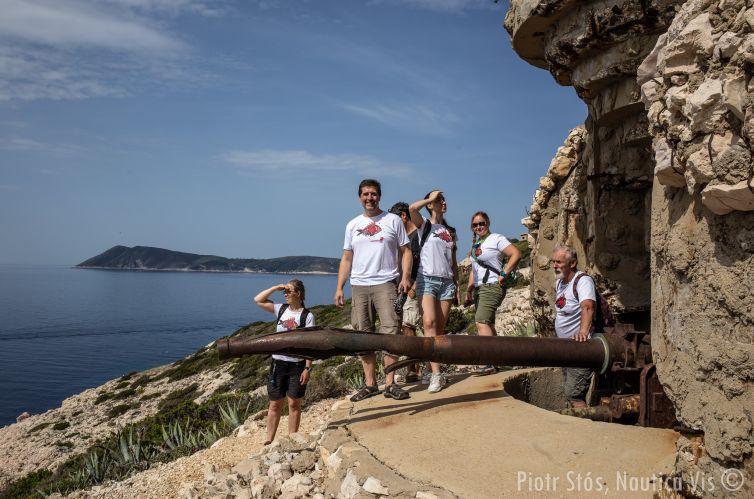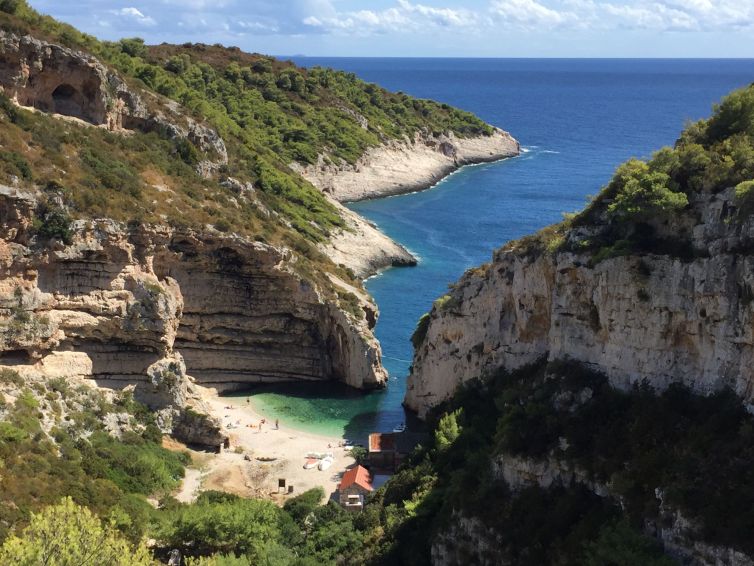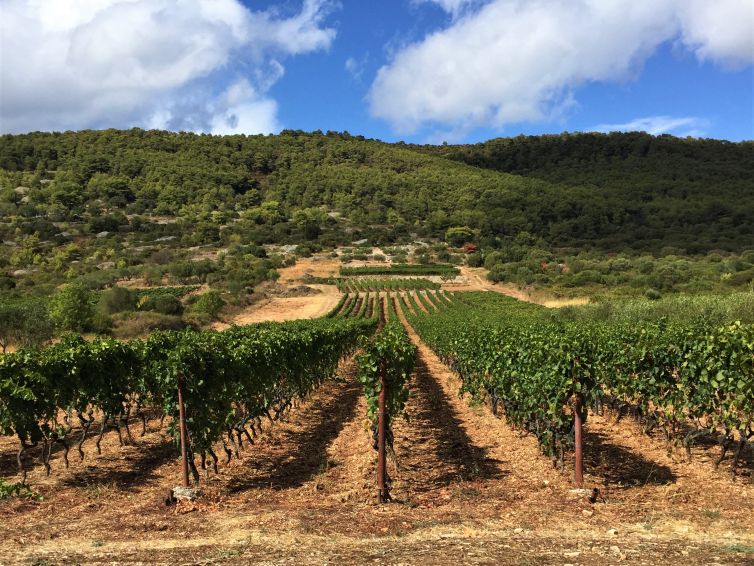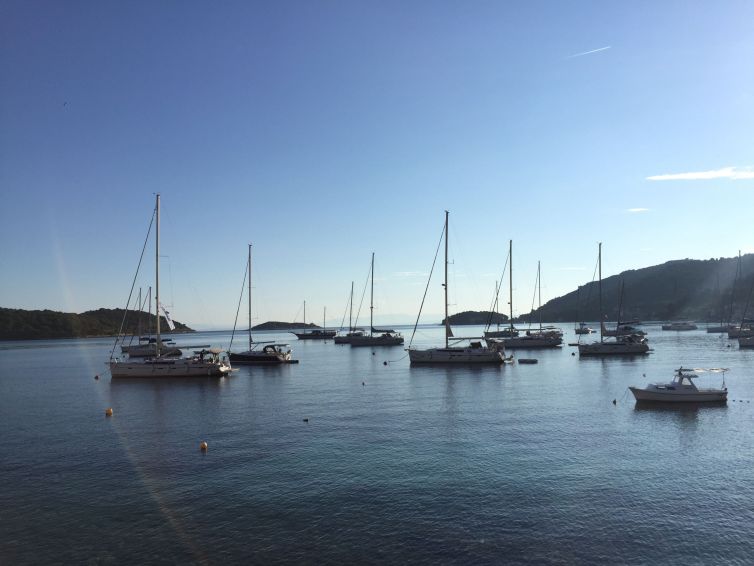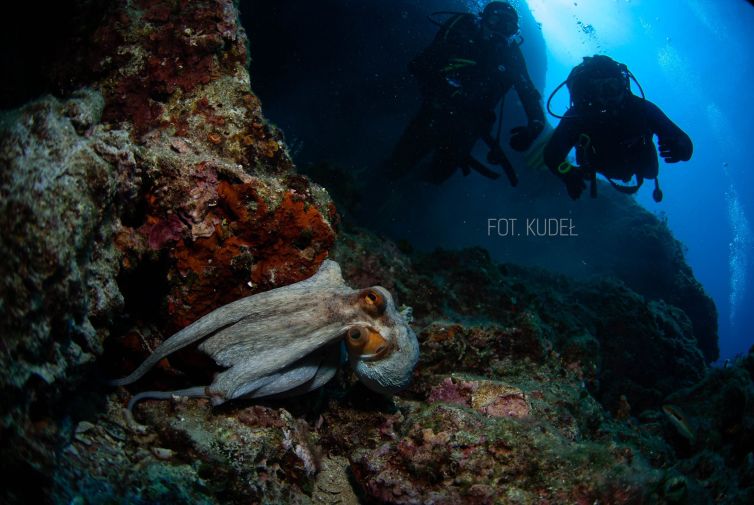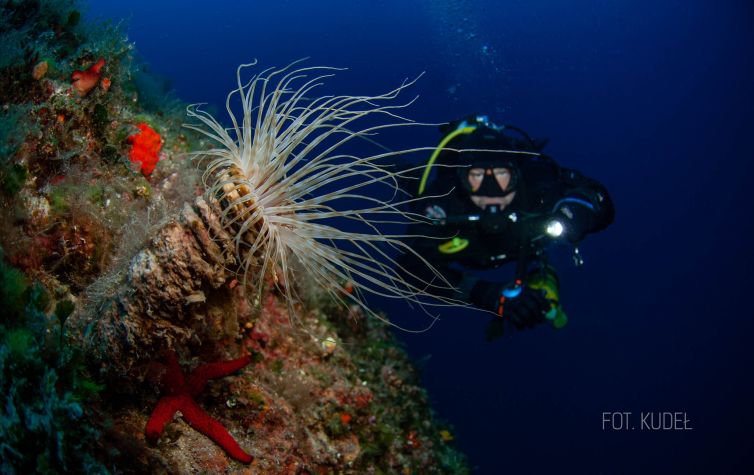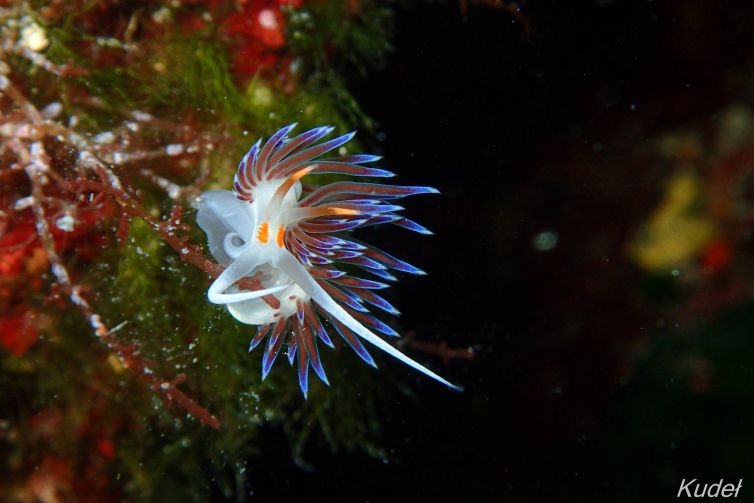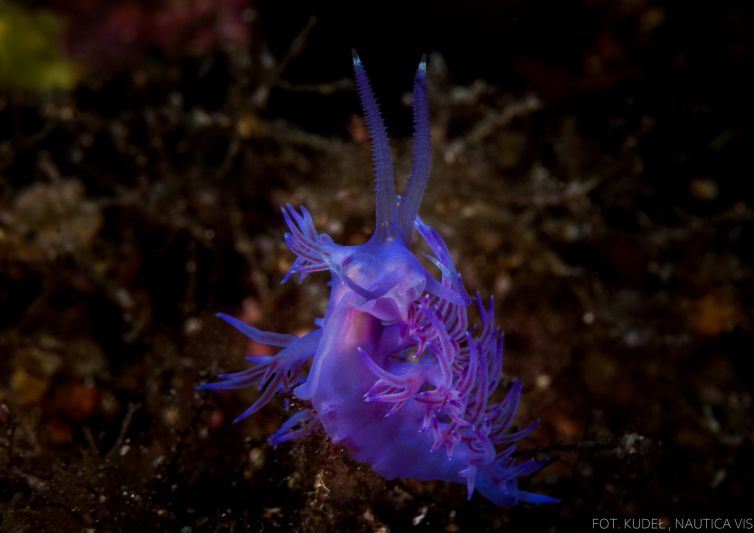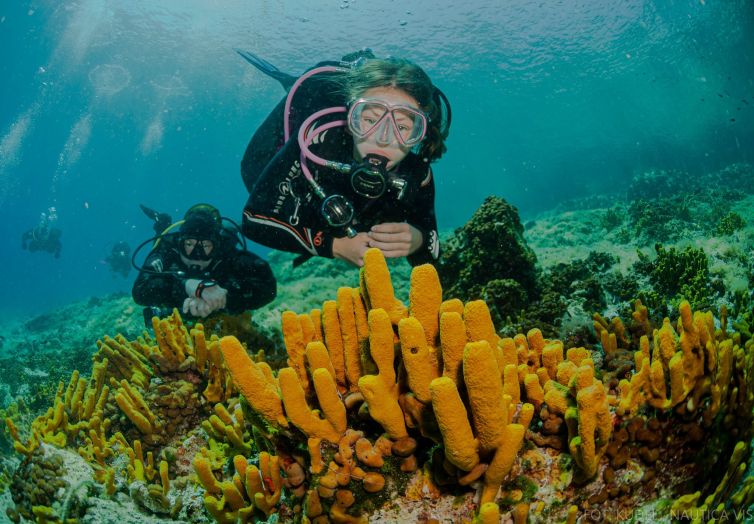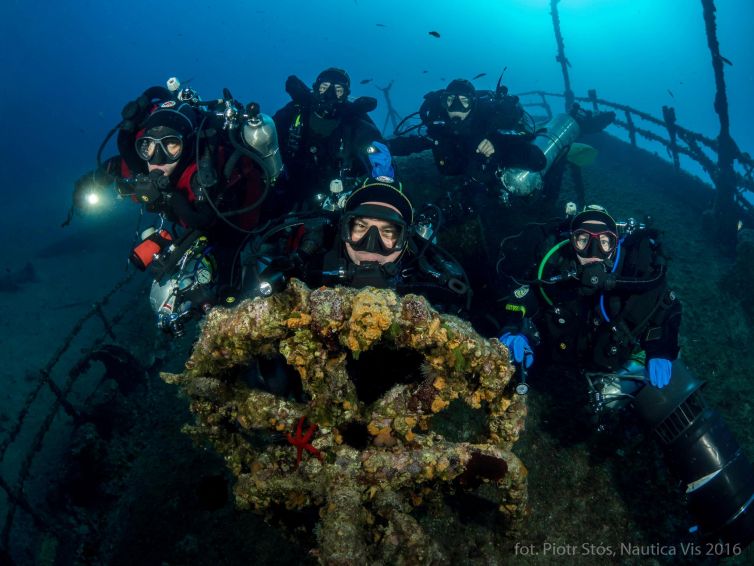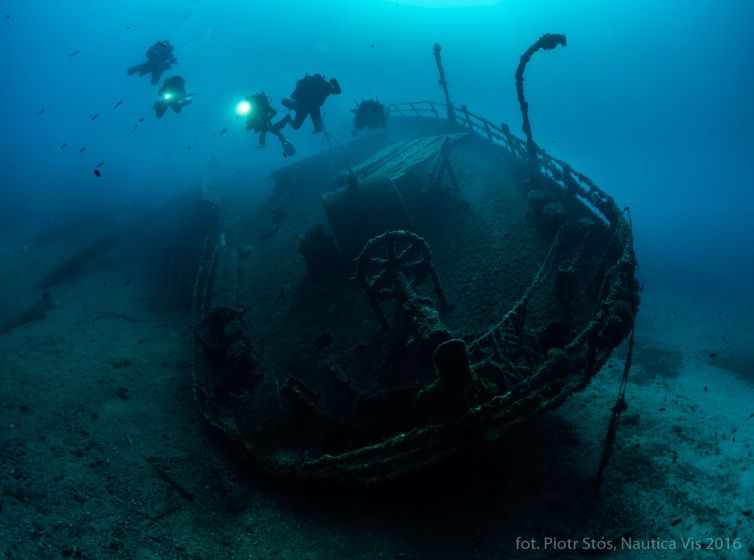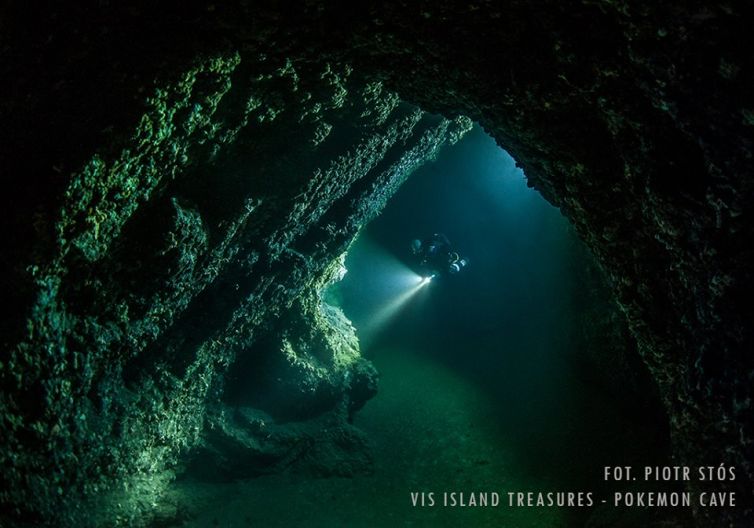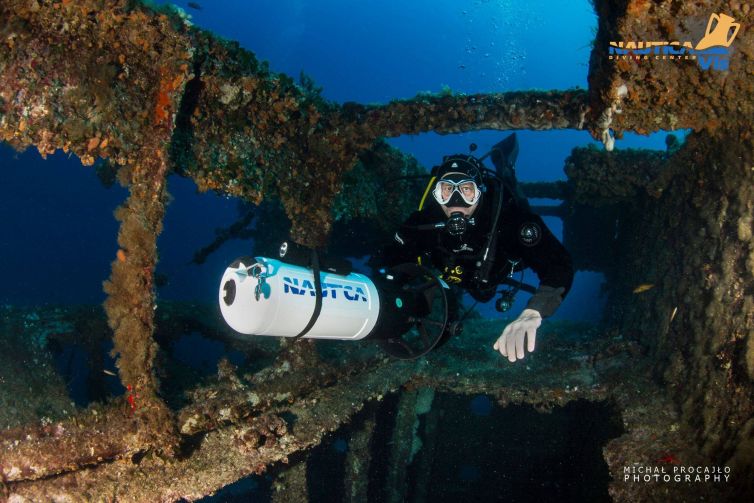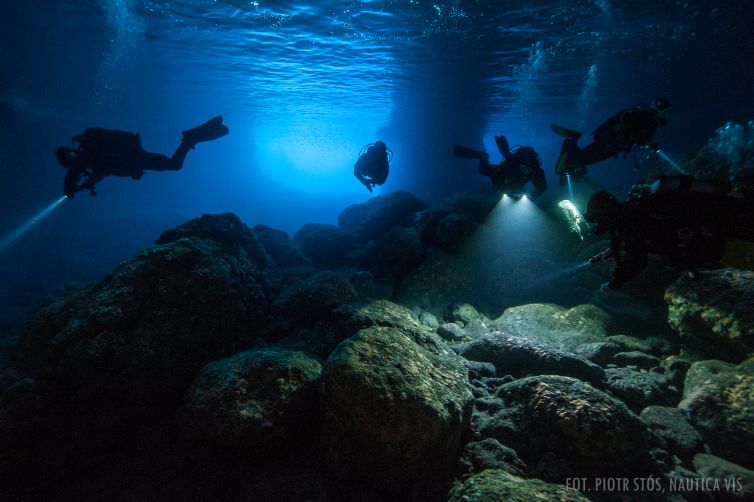About
Vis Island
Vis – the island of rich history
Vis island, with its area of not quite 100 sq km, played an important role in the history of Dalmatia. Inhabited in the Neolithic period, it became the first Greek colony on the Adriatic Sea in the 4th century BC. The ancient town of Issa was located in the same place, where today the Nautica Vis Diving Center is. Just in front of the center there was a harbour, which remains can be found on the depth of 2-6 m. Then Issa became Illyrian, but a few years BC it got under the Roman rule. In the early centuries AD Vis was developing as the most important commercial port on the Adriatic Sea. Many cargo ships, transporting inter alia olives, wine and fish in the ancient amphorae, were passing close to the island. Not each pass was successful – nowadays divers can admire the remains of the amphorae in a few places. After the fall of the Roman Empire, the Dalmatian islands became the property of Byzantium for the next 5 centuries and in those days the Slavs came to the island for the first time.
The tumultuous history, however, was not over. In the end of 10th century AD Venetians totally destroyed the towns of Vis and Komiža and abducted almost all inhabitants. Those who left, moved to the interior and settled new villages of Dol and Velo Selo. Vis got under the rule of the Republic of Venice. The Venetian influence is still recognizable in the architecture on the island. The Middle Ages meant a lot of wars and battles, but the worst happened after 18th century. Between 1797 and 1806 Vis was, by turns, Austrian, French and British. Then there were numerous battles between the last two and in 1815 Vis again became Austrian. The next change was brought only by World War II, after which Vis became a part of a newly created Yugoslavia. After the war, the army used the island as its main naval base. Tito, panically afraid of attacks, was building more and more bunkers, which now can be visited by tourists.
… and more than history
Rich history of the furthest from the mainland among inhabited islands can be seen both on land and under the water. There are museums showing Vis in the ancient times, there are two marvellous towns of Vis and Komiža, there are military tours organized (bunkers can be also visited individually) and finally there are numerous wrecks of ships and planes under the water. Regardless, the beauty of the island does not only come from its history. Geography, geology and biology are equally important. What can be found on the island is for example Štiniva Beach, awarded in 2016 the most beautiful beach by European Best Destination’s jury. Moreover, there are numerous beaches that can be reached by offroad cars or boats only. The coastline is over 60-km long and hides numerous cosy empty coves, among which everyone can find his own paradise on Earth.
Besides, there are natural caves like Kraljičina Špilja and high mountains. What is interesting Sveti Duh (Hum) is 585 m high and it places Vis on the fifth place of the list of the highest Croatian islands. Under the water there are even more caves and caverns than in the island’s interior and high mountains continue as – interesting for divers – steep walls. The walls go down, depending on the location, to 40-80 m BSL. The walls are densely covered by various underwater organisms. On the island the nature is as rich as below the sea level. Adding Mediterranean climate, great seafood and wine, warm sea, higher biodiversity among underwater life than in the other parts of the Adriatic Sea and visibility reaching 30 m, we got a perfect place for, not only diving, holidays.
Diving around Vis
It is not enough to say that in the waters surrounding the island of Vis every diver will find sites particularly interesting for him. There are several places suitable for the beginners as well as a few real treats for technical divers. In some places the sea is always calm, with no waves and currents, and gripping objects can be found on shallow depths. On the other hand, there are wrecks located deeper than 40 m below sea level and caves and caverns demanding advanced diving skills. Moreover, the diving sites can be divided into different groups basing on types of these sites, not only on the depth and difficulty. Four groups can be distinguished: natural sites, archaeological sites, caves and caverns and wrecks.
The first group – natural diving sites – consists of walls full of life, slopes with different angles of inclination and several places where enormous rocks create corridors through which the divers can swim. Walls are usually almost vertical. From the surface to a depth of about 10 m there are lots of small fish playing, deeper the divers can find numerous crustaceans hiding in the holes, moving bearded fireworms and nudibranches belonging to various species. Natural diving sites are the most impressive during the night dives, when all the nocturnal animals are hunting. Although there is plenty of light under the water during the day dives, it is good to use torches. First of all, to be able to spot organisms in the holes, secondly to bring out natural colours of deep water organisms, like red sea fans. Due to disappearance of warm pigments, the yellow sponges, abundantly covering rocks at a depth of about 40 m, are fluorescent.
Mentioned yellow sponges are typical inhabitants of the entrances to caves and caverns. In the entrances, on the border of light and dark, there are also living numerous crustaceans, like spiny lobsters, squat lobsters and spider crabs. Caves and caverns differ in shapes and sizes, but can be found almost everywhere around the island of Vis. Small caverns with spacious entrances, suitable for the beginners, are often located at the depths of a few meters. Although in such caverns daylight can be always seen, the divers have to keep in mind that they are visiting overhead environment and that they need to keep neutral buoyancy, because the bottoms of caves and caverns are always covered by sand or silt. Besides, there are a few caves requiring advanced skills. There, in the dark, thousands of shrimps can be found. There, as well, occur unexpected phenomena – in one cave there is a thermocline and a halocline at a depth of 6 m above which water loses on temperature and salinity.
As the underwater walls, slopes, caves and caverns are natural forms, there are also different artificial objects adapted by sea life. To such objects definitely belong amphorae – the remains of ancient times. A few thousands years ago the island became the first Greek colony on the Adriatic Sea. Then it got under the rule of the Roman Empire and for years was the most important commercial port of the Adriatic Sea. Numerous ships were passing the island and some of them crushed in the surrounding waters, hitting unmarked islets. After those wooden vessel left nothing by the cargo – amphorae in which wine and olive were transported. After long years these amphorae are abundantly covered by colourful sponges and inhabited by octopuses, painted combers and hermit crabs.
It occurs that younger objects, not having archaeological meaning, are also attractive for marine life. It is even hard to imagine a steel wreck without its inhabitants, among which should be listed inter alia scorpionfish, forkbeards and moray eels. Around the island of Vis there are a few wrecks from the 20th century. Some of them, like a fishing boat Fortunal, crashed by accident, but several are historically important. Among those, there is an Italian tugboat Ursus and two airplanes belonging to American Air Force – the Boeing B-17G Flying Fortress and the B-24 Liberator. Although the time of World War II has left its mark on the history of the region, it also somehow contributed for the touristic attractiveness of the island of Vis, specially for the advanced and technical divers, who can admire historical objects under the water.



